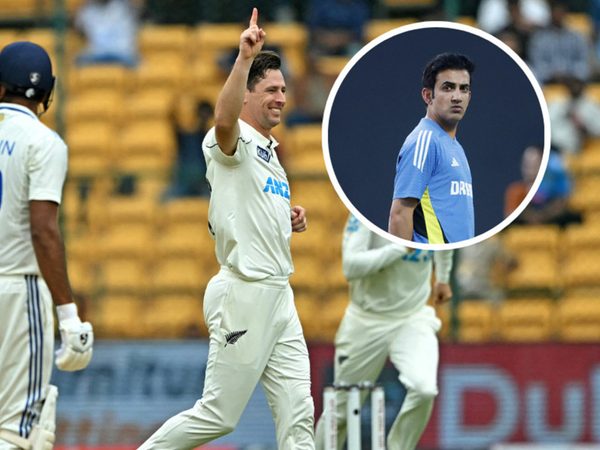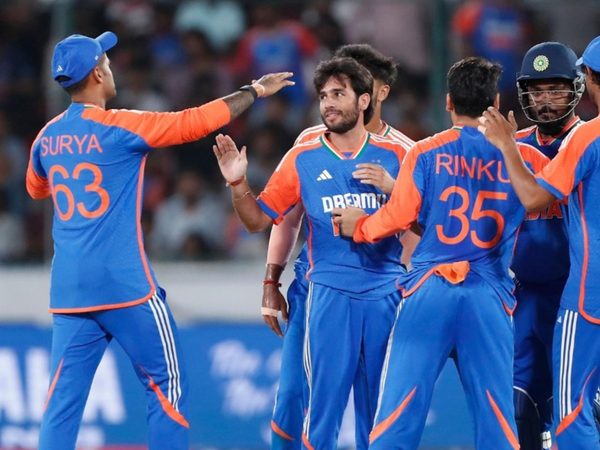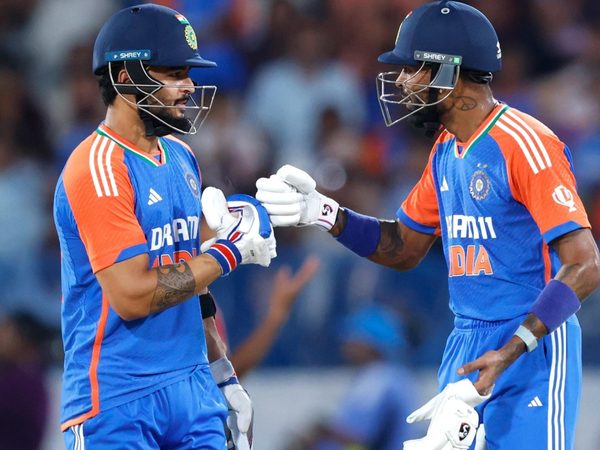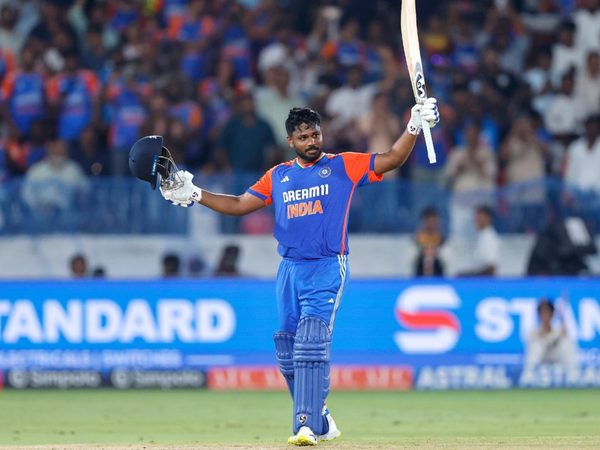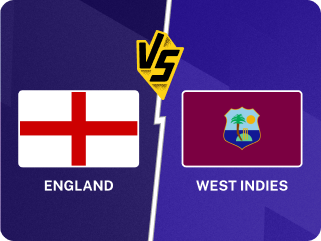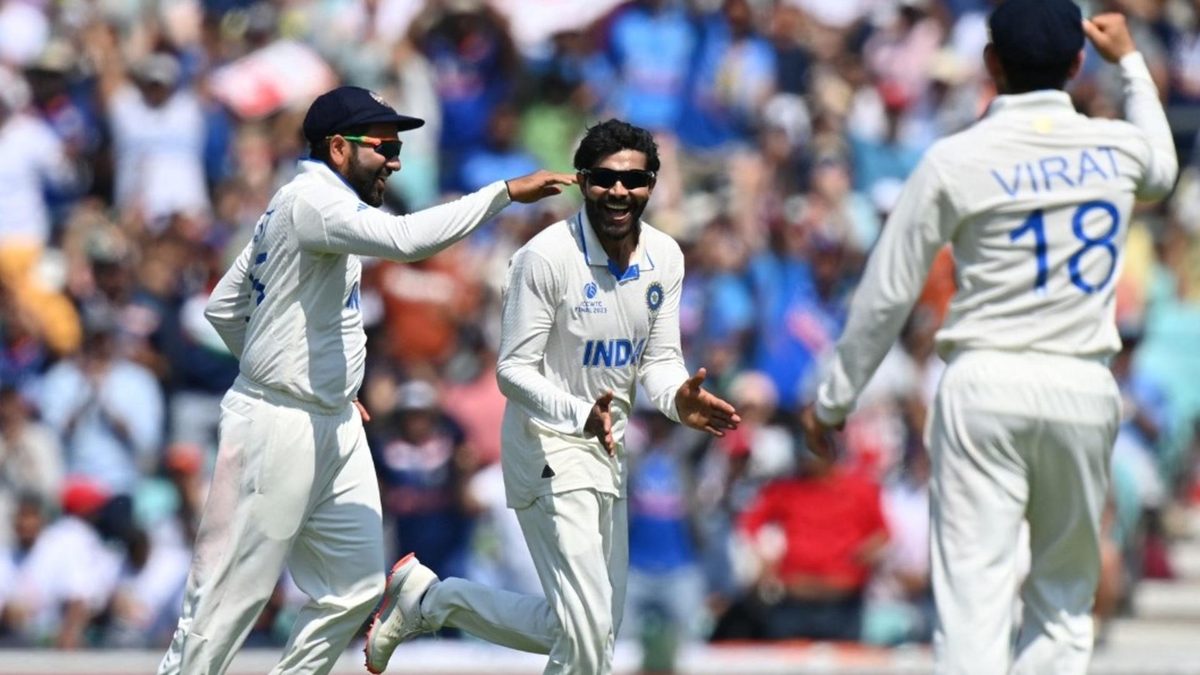
Indian cricket is approaching a phase of transition and the inevitable question surfaces: what will the Test XI look like once the ‘Big Five’ of Rohit Sharma, Virat Kohli, Ravichandran Ashwin, Mohammed Shami, and Ravindra Jadeja retire?
For well over a decade, the stalwarts have been central to India’s dominance in the format, carrying the team through some of its most memorable triumphs. Together, they’ve built a legacy that has seen India rise to the top of the ICC Test rankings, create an aura of invincibility at home, and challenge the best teams on foreign soil.
Each of these five has contributed uniquely: Rohit’s imperious form as an opener in the latter half of his career, Kohli’s unmatched hunger for runs to go with his aggressive leadership, Ashwin’s mastery of the ball, Shami’s skilful seam bowling, and Jadeja’s all-round brilliance.
Their collective experience has provided India with stability in moments of crisis, steering the team through highs and lows alike. They’ve not just been a part of India’s success; they have been the driving force behind it.
READ: India’s home dominance is worth celebrating and shouldn’t be taken for granted
But while holding onto the past is glorious, the reality is that they are at the twilight of their careers. Barring Shami, who at 34 will aim to go where very few seamers have gone in the past, all other veterans are on the wrong side of their thirties. In the modern age, medical science has done wonders and improved fitness for a longer period is not uncommon, but the body and the reflexes eventually wear down, unable to carry on the rigours of a high-pressure job.
Their departure will, undoubtedly, mark the end of an era, and while the next generation offers glimpses of promise, numerous questions over the composition of the side in the future remain.
Some pieces of India’s future Test team puzzle appear to be falling into place. Yashasvi Jaiswal and Shubman Gill are almost certain to form the backbone of the top order as openers. Jaiswal, with his hunger for big runs, has already had a record-breaking start to his career. Gill, on the other hand, brings a combination of elegance and aggression and while he is prone to inconsistencies, he has been regarded as the future superstar, having first shown off his wares at the Gabba in 2021.
Shubman Gill in Test cricket:
— Wisden India (@WisdenIndia) September 4, 2024
25 matches, 1,492 runs @ 35.52, HS: 128 pic.twitter.com/udcj2FdvH8
Sarfaraz Khan’s prodigious run-scoring in domestic cricket makes him a likely candidate for a long-term middle-order role, while Rishabh Pant will continue as the mainstay behind the stumps and a destructive batter. These four seem almost guaranteed to anchor the Indian Test batting lineup after the retirement of the senior players.
On the lookout for middle-order, all-round and seam options
However, it is the areas beyond these locks where questions arise, with India also on the lookout for a No.3. As things stand presently, Musheer Khan, Sarfaraz's brother, is a strong contender to make the side in the not-so-distant future, while Devdutt Padikkal, who has a strong defence, will also be a favourite to make the position his own, having already scored a fifty on Test debut earlier this year.
KL Rahul, who has alternated between being brilliant and inconsistent, may still be around, but his long-term role remains uncertain. He has batted between No.1 and No.6 in Test cricket and brings with him experience and versatility, but his form will need to be monitored closely.
What’s less certain is who will slot in at No. 7. India has traditionally relied on this position to provide balance, someone who is capable of batting responsibly and chipping in with the ball. Jadeja’s eventual exit, thus, will leave an enormous gap, particularly for overseas tours where his all-round ability has been invaluable.
Axar Patel, while an effective bowler in home conditions, does not seem to possess the same batting prowess as Jadeja for Test tours outside the subcontinent. His bowling is untested overseas as well, with Axar having never bowled outside India and Bangladesh in Test cricket. Axar has also fallen behind in the pecking order among spinners at home, with Kuldeep Yadav edging ahead.
Even when India go abroad, Jadeja, due to his all-round skills, is picked over Ashwin, the superior spinner. However, on current form, Kuldeep will make the XI as the lead spinner due to his bowling potential, once Ashwin and Jadeja leave, leaving a spot vacant for an all-rounder who could win games with either bat or ball at No.7.
The bowling attack, which has been a key component of India’s recent success, will also face significant changes. While Jasprit Bumrah, provided he stays fit, will lead the pace battery for the foreseeable future, the supporting cast is less certain. Mohammed Siraj has grown into a fine fast bowler and will likely step up as the second seamer, but beyond him, there are few obvious choices. Names like Akash Deep, Mukesh Kumar, and Khaleel Ahmed are promising, but whether they have the consistent ability to take wickets in all conditions as Shami has done for years, remains to be seen. India’s depth in the seam bowling department is on the rise, with several promising bowlers emerging but it will be some time before all options are explored and the best combination is found.
Historically, the third and fourth seamers have been vital to success for India and this is where they could struggle, even in the upcoming series against Australia. Shardul Thakur, who has been preferred over Ashwin overseas when the spinners have little assistance, is unlikely to be picked for the upcoming tour, having not played much cricket in the last few months owing to injury. The immediate aim will be to find a seaming all-rounder who will lend balance. With questions over the best replacement for Jadeja as well, this area could be a major cause of concern for India going forward.
Who will be India's next Test captain?
The transition away from the Big Five will undoubtedly hurt India, particularly with no prominent leadership options as well. Pant and Bumrah are the most obvious candidates, with Gill in the background. Bumrah has a tactically strong mind but he will not play every Test match. Pant and Gill’s captaincies have left much to be desired in the IPL and the selectors will first need to identify a core leadership group for the future before they make bigger plans.
While India’s Test team might still be competitive, given the strength of their domestic pipeline and the quality of their younger stars, it’s not just about replacing talent; it’s about building a team that can thrive under pressure and that takes time. The true test will come when they step out of the comfort of the familiar, and it’s there that the impact of losing the Big Five will be felt the most. We are certainly not ready.
India's possible Test XI after the Big Five retire
Yashasvi Jaiswal
Shubman Gill
Musheer Khan/Devdutt Padikkal
Sarfaraz Khan
KL Rahul
Rishabh Pant (wk)
Axar Patel
Kuldeep Yadav
Jasprit Bumrah (captain)
Mohammed Siraj
Akash Deep
Follow Wisden for all cricket updates, including live scores, match stats, quizzes and more. Stay up to date with the latest cricket news, player updates, team standings, match highlights, video analysis and live match odds.

